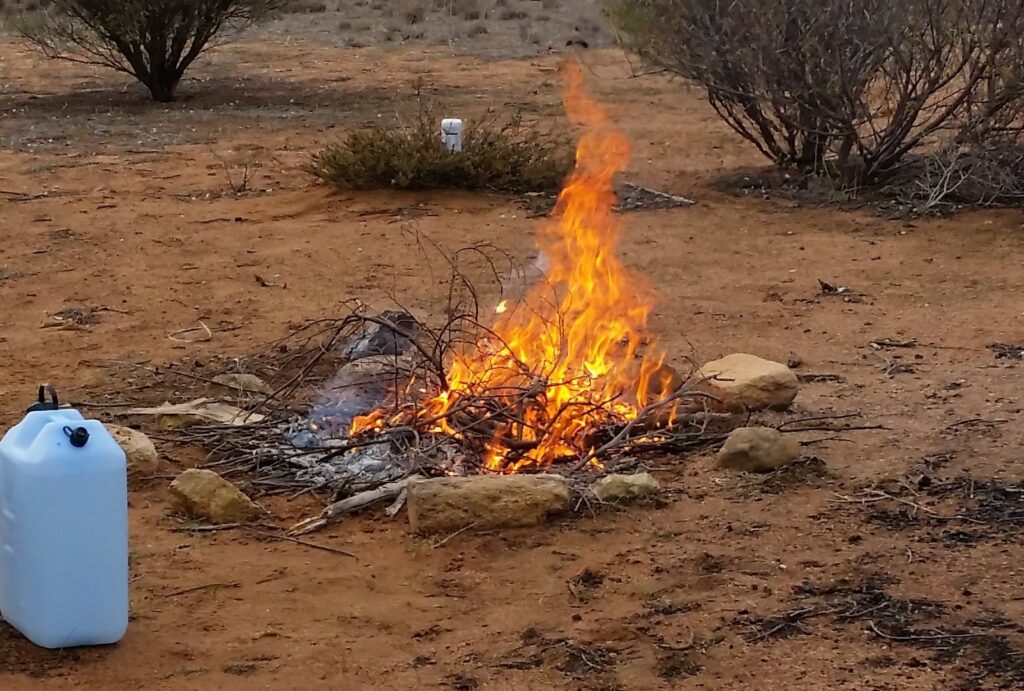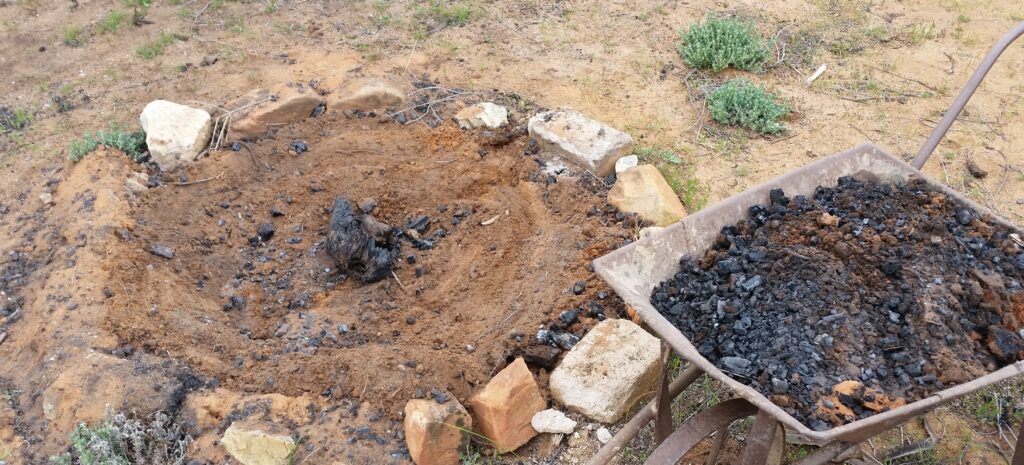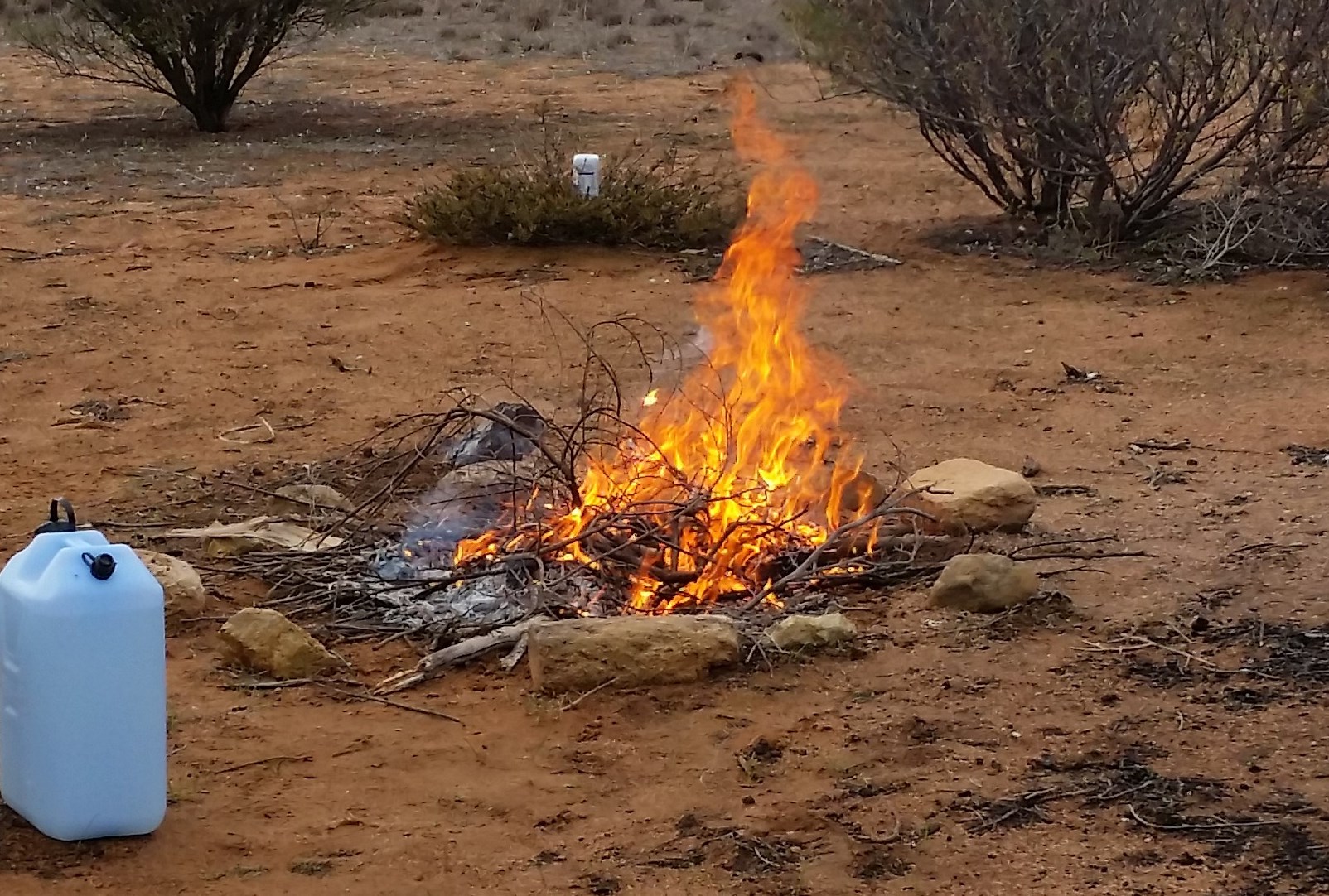ACTION PLAN
FOR
BACKYARD SOLUTIONS FOR GLOBAL WARMING
by David Reynolds
1. Store and dry
Leaves, twigs, fruit tree prunings, rose and shrub prunings or any non-treated wood available (dropped limbs, off=cuts of woodwork projects etc) until you have as much as you can store. Wait for them to dry.
2. Separate
Twigs and leaves from the heavier branches and pieces of wood.
When all the wood is dry proceed to step 3.
3. Dig a hole in the ground
– approx. 600mm circumference X 400mm deep (~2 feet wide, 15 inches
deep) will do or make it larger if you wish.
4. Place in it
A small amount of your small dry prunings, shrub prunings, fruit tree prunings or other wood.

5. Start a small fire
in the centre of the bottom of the hole
REMINDER: Check that you are complying with any/all local regulations that may restrict or forbid the lighting of fires in the open at this time.
6. Be patient
Keep building the fire up higher slowly but surely without smoke but plenty of flames.

7. Add more small wood pieces
but as the fire builds in heat add larger pieces until the hole is filled up to,
but not higher than, the ground surface.
8. When you see any smoke coming off the fire,
throw a small handful of twigs on that area of the fire – this will burn off the
methane gas.

9. When your fire-in-the-hole is full up
and fully alight, with some ash just beginning to appear on the wood –
FILL the hole with water, quenching the fire completely.
You now have biochar!
10. Leave
your biochar to cool down and the water to drain away. Then leave it to dry out a bit for a few days.
11. Shovel
out your biochar. If your prunings, wood etc are now fully converted into
biochar the wood pieces will crumble under your handgrip. If some of it is still solid, then put that piece aside for your next biochar burn.

12. To enhance and speed up the
effectiveness of your biochar in the soil, place it in the liquid from a worm
“farm” for a few days; or use it as litter in your poultry house, where it will
combine with the manure; or mix it with any manure, and leave mixed for a
few days before using it in your garden. Caution: Beware of using
manure that is too fresh as it may contain excessive concentrations of
phosphorus that could “burn” your plants.

Leave a Reply